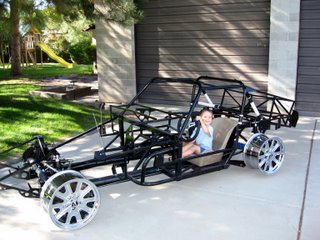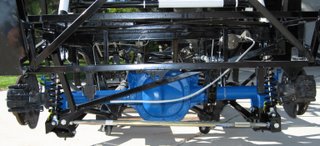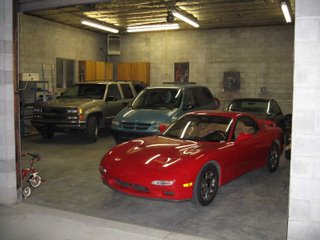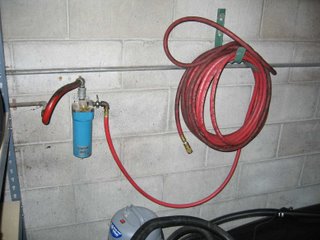We'll call it 15 hours. I don't really know how accurate that is, since I've just been spending an hour here and there for the last week. I finished the cockpit rear aluminum. Drivers side was great. Passenger side didn't want to line up, so I had to trim it, but it is in too.
Then yesterday I tried to put the motor in. Got myself a load leveler from Harbor Freight. ($20) This is a device that lets you change the support point of your hanging load so that it tips, so you can drop the transmission tail down into the transmission tunnel, then flatten it out as you lower the motor.
Attempt #1:

This was the first attempt. At about this point, it became clear that I needed to have the crank on the other end of the load leveler, because it was going to hit the firewall.
Attempt #2:
No good pictures of this one. I tried the same thing but with the crank at the other end. This time, I got the motor down within a couple of inches of the motor mounts, but had to pull it back out because the load leveler hit the firewall crosspiece.
Attempt #3:
 I took the upper intake manifold off the motor to get a little more room. I thought that if the load leveler was where the intake normally goes, I'd clear the firewall. It almost worked. It was so close that I could actually put the motor mount bolts onto the motor mount brackets, but I just couldn't drop them into the slots.
I took the upper intake manifold off the motor to get a little more room. I thought that if the load leveler was where the intake normally goes, I'd clear the firewall. It almost worked. It was so close that I could actually put the motor mount bolts onto the motor mount brackets, but I just couldn't drop them into the slots.Attempt #4:
Went without the load leveler this time, with just a chain on the motor. That made it difficult to get the transmission tail up over the 4" round crosspiece in the transmission tunnel. But it eliminated all the clearance issues at the firewall. I used two jacks, a furniture dolly, a 2x4, and some wooden shims to maneuver the transmission in. The result? Success!


























